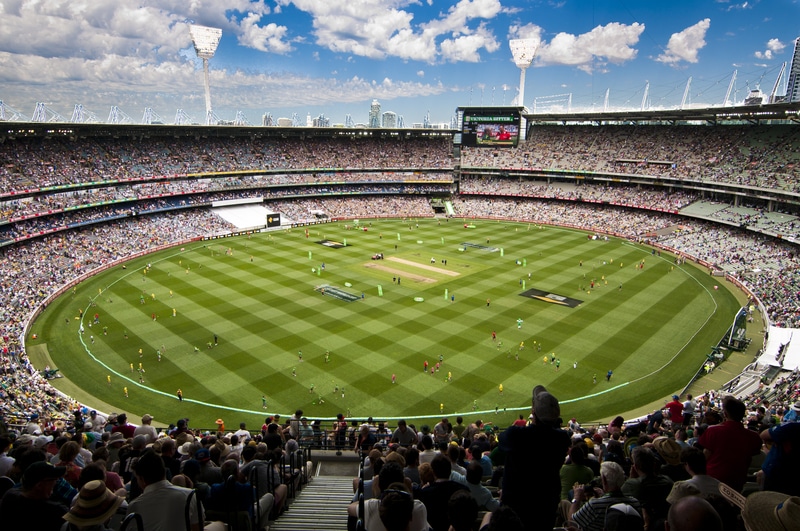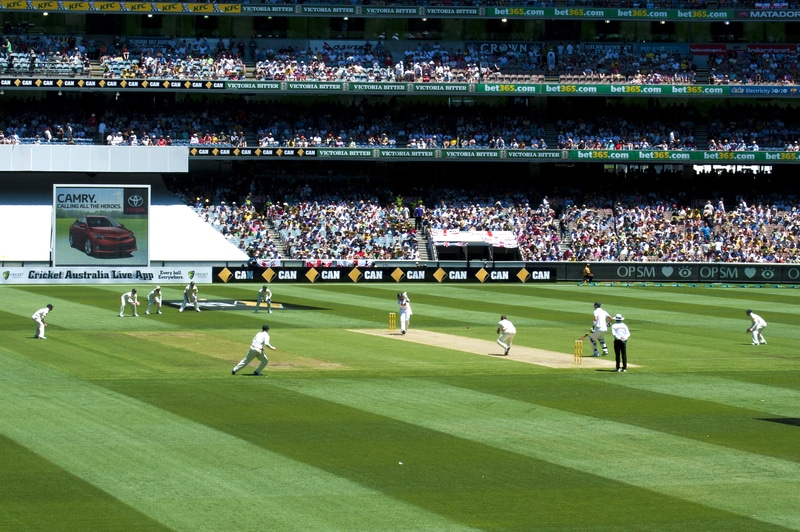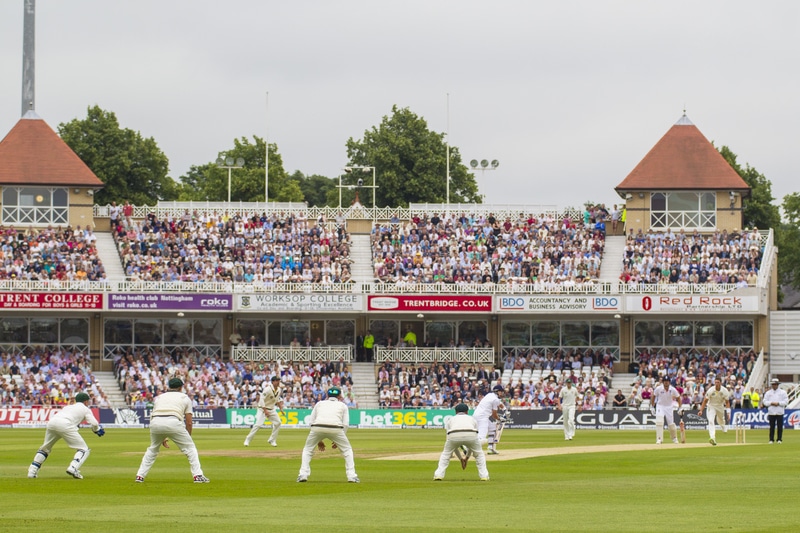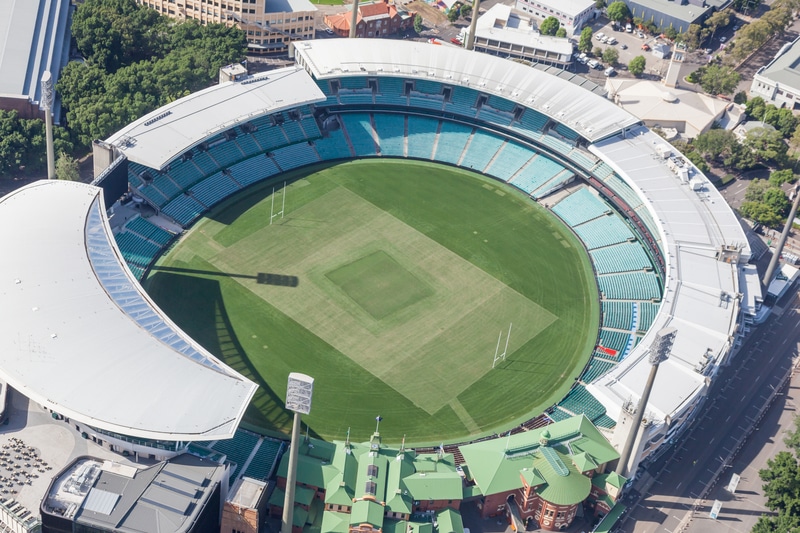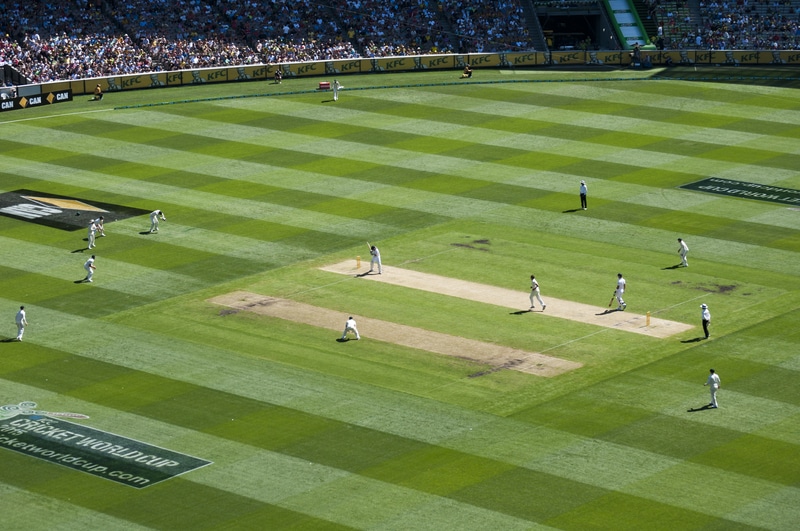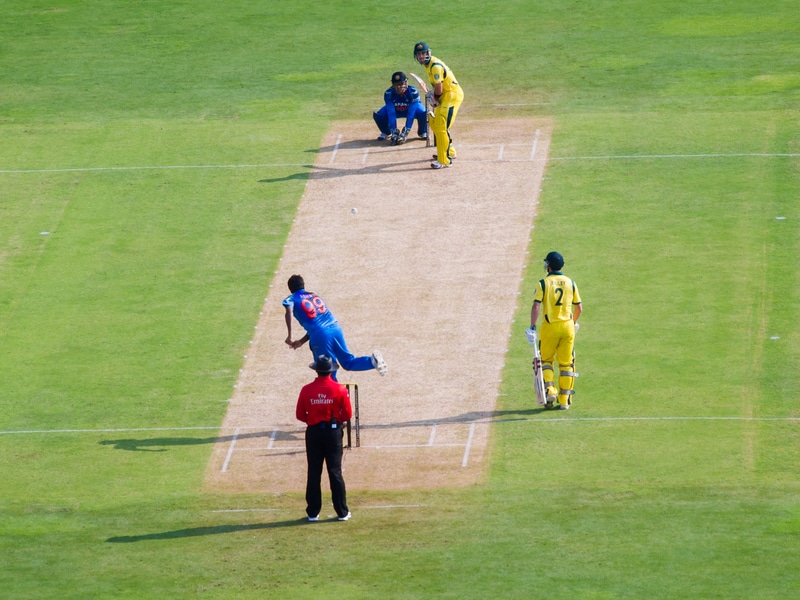Last updated on January 3rd, 2023 at 02:24 pm
Cricket fields can vary in size and shape, although most generally have an oval shape. In general, the diameter of the field is between 137m and 150m from boundary to boundary. The International Cricket Council, or ICC, dictates that the boundary line on any side must be within 83m from the center of the pitch. The size of a cricket field does not change due to the type of cricket match occurring.
So, is there an official size for every cricket pitch, and what is a boundary on a cricket field? What is the shortest and longest cricket field in the game? What are the top 5 largest cricket grounds based on boundaries? Are men’s and women’s cricket fields the same size?
Here is the complete guide to how big cricket pitches are and much more!
Is there an Official Size for Every Cricket Pitch?
The cricket pitch in international and domestic matches is a rectangular area of 20.12 meters long and 3.01 meters wide. The pitch ranges from stump to stump and allows for just over 1m behind each stump to allow space for the popping crease, wicketkeeper keeper, and bowling crease. Standard ICC conditions indicate that all cricket fields must be between 137m and 150m from boundary to boundary.
The infield and outfield areas form by making two semi-circles of 27.43m in radius. Each semi-circle is centered around the middle stump on either side of the pitch.
Finally, another semi-circle is constructed inside the infield line. This area is known as the close-infield and has a radius of 13.72m. The close-infield is centered around the popping crease located on either side of the field.
What is a Boundary on a Cricket Field?
A boundary is the perimeter of play on a cricket field. These boundaries are usually marked by a set of ropes, plastic cones, or even small fences in some cases. The boundary is the field of live play in which fielders can defend.
The batter can record a hit for six by hitting the cricket ball past the boundary. There is a mandatory buffer zone of approximately 3m between the boundary line and the perimeter or advertising signs. This buffer zone is necessary to ensure player and spectator safety.
What is the Shortest Boundary of a Cricket Field Allowed?
Before the match starts, the umpires and captains will determine the field’s boundaries. According to ICC law, the border on a cricket field must be at least 59.43m when measured from the center of the pitch.
What is the Longest Boundary of a Cricket Field Allowed?
According to the ICC law, the longest boundary allowed on a cricket field is 82.29m from the center of the pitch.
What are the Top 5 Largest Cricket Grounds Based on Boundaries?
- Sydney Cricket Ground in Australia – Straight Boundary 93.72m
- Lords, London in England – Straight Boundary 88.87m
- The Wanderers, Johannesburg in South Africa – Straight Boundary 86.76m
- Melbourne Cricket Ground in Australia – Straight Boundary 86.24m
- SSC Colombo in Sri Lanka – Straight Boundary 86.09m
Are Men’s and Women’s Cricket Fields the Same Size?
Men’s and women’s cricket fields are not the same sizes. In most cases, women’s cricket matches will take place on smaller fields than the men’s games.
ICC rules dictate that men’s boundaries are between 59m and 82m away from the center. On the other hand, the boundaries for women’s cricket matches must be between 55m and 64m from the center of the pitch.
Does the Length of the Cricket Pitch Change for Different Age Groups?
The length of a cricket pitch varies primarily based on the playing age group. For players between the ages of 10-16, the pitch is a synthetic material with a length of between 25-28m. Players under ten will generally play on a pitch around 18m in length.
What is the Distance of a Cricket Pitch?
The standard distance of a cricket pitch is exactly 20.12m between stumps, with an additional 1.22m behind the stumps on each side. The distance is 22.56m from one end of the pitch to the other. The turf pitch is approximately 3.05m wide in standard international play.
Why are there 2 Pitches on a Cricket Field?
There are multiple pitches on a cricket field for several reasons. Firstly, each game of cricket requires a new pitch to be available anytime. Because the pitch takes time to restore and refurbish, a cricket ground must have more than one pitch available.
Secondly, various age groups will play on pitches made of different materials. The different materials can change the velocity at which the cricket ball moves and make it easier or harder for the batter to hit.
Why Do Cricket Pitches Have no Grass?
Cricket pitches have no grass because the grass will wear and deteriorate far too quickly for the groundskeepers to repair. If the grass wears throughout the game, it gives one cricket team an unfair advantage. Furthermore, using turf or synthetic material rather than natural grass enables bowlers to deliver the ball more effectively.
What is the Distance Between the Bowler and the Batsman?
The distance of a cricket pitch is 22.56m from one end of the pitch to the other. The distance between the stumps and bails from one side to the other is approximately 20.12m. This means that the distance between the bowler and the batsman at the delivery time is just under 20m.
What is the Distance Between the Wickets in Cricket?
Each wicket in cricket is approximately 22.86cm wide, featuring three wooden stumps with two bails on top. The distance between wickets on either end of the pitch is 20.12m or 22 yards.
Conclusion: How Big is a Cricket Field?
To summarize, cricket grounds have set boundary limits which indicate the playing area must be between 137m and 150m from boundary line to boundary line. The field separates into three semi-circle segments; the close-infield, infield, and outfield. On a cricket field, the boundaries have markings with rope or plastic cones.
Cricket pitches can vary in size and material depending on what age group is playing. In standard international matches, the pitch dimensions are 22.56m, and 3.05m wide played on turf. The bowler and the batsman are approximately 20m apart from one another on the field. Most cricket grounds will have multiple non-grass pitches available at all times.
Similar Posts:
What Does Hitting a Six Mean in Cricket?
What is Strike Rate in Cricket?
Greg Kristan, owner of The Stadium Reviews, LLC and TM Blast, LLC, brings his extensive experience visiting over half of the MLB ballparks, along with numerous MLS, NHL, NBA, and NFL venues, to provide in-depth coverage on the bag policy, food options, and parking. He has also been interviewed about his experiences on several sports podcasts.

